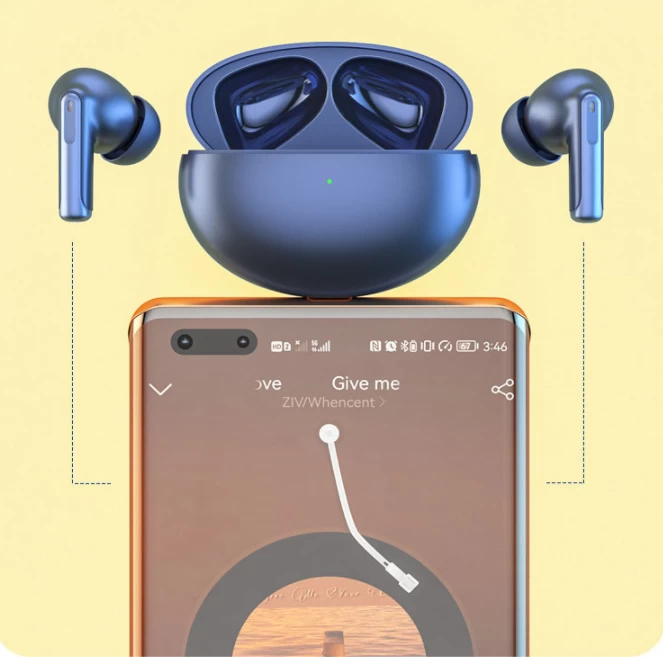How does the audio brand tune the earphones?
New TWS wireless earphones are a treat, and there are plenty of options out there, but you can also buy TWS wireless earphones you don't like, both in terms of comfort and sound quality.
In order to reduce this problem, we analyze the factors that affect the sound quality of TWS wireless earphones.
6 things that affect the sound quality of TWS wireless earphones:
1. Types of drive monomers
2. Types of Bluetooth encoding
3. TWS wireless earphones design type
4. Types of TWS wireless earphones plugs
5. Ear pad size and material
6. Audio manufacturer's tuning

Types of drive units
There are six types of drive units, including moving coil, moving iron, planar magnetic, electrostatic, bone conduction and hybrid drive units. Each has different properties and strengths and produces different sounds.
Dynamic is the most common type and is found in most TWS wireless earphones as it is the cheapest to produce. Note that the quality of the driver cells will also vary, meaning a well designed moving coil can beat a poorly made moving iron.
Types of Bluetooth encoding
Bluetooth TWS wireless earphones use Bluetooth audio codecs to transmit audio. Currently, there are multiple Bluetooth codecs on the market, such as aptX, LDAC, AAC, SBC, and LDHC. All encodings have different bit rates, sample rates, bit depths and latencies.
So some encodings are better for gaming and watching movies, while others are better for listening to music. If sound quality is the priority, the codecs with the highest bit rates are required, namely LDAC, LHDC and aptX Lossless.

TWS wireless earphones Design Type
Most Bluetooth TWS wireless earphones have a closed-back design, like a wall between the user and the outside world; ambient noise can't get in, and music can't leak out of the TWS wireless earphones. Most people prefer this approach, as it provides a more intimate listening experience.
By contrast, listening to music with open-back TWS wireless earphones is like sitting next to an open window in a room with speakers; ambient noise can get in and music can leak. As a result, open-back TWS wireless earphones enjoy a wider soundstage and better audio imaging, but people next to them will be able to hear what the user is listening to.
Types of earphones plugs
There are four types of plugs for wired earphones: TS, TRS, TRRS, and TRRRS. Each type of plug has a different number of connectors, TS has two, TRS has three, TRRS has four, and TRRRS has five connectors. TRRS is the most common 3.5mm plug, but cannot play true balanced stereo because at least five connectors are required. Balanced stereo sound adds depth, direction and distance to music, allowing users to distinguish sounds from far or near, left or right, behind or in front, above or below. However, this is only possible on TRRRS plugs.
Ear pad size and material
The larger the ear pads, the further the distance between the ear and the speaker, simulating a wider soundstage. The better the earpads fit around your ears, the better seal they can create, helping to isolate ambient noise and reduce unwanted hiss and buzz in your music.
In over-ear TWS wireless earphones, leather and velvet are the most common materials. In TWS wireless earphones, there are two kinds of earplug materials: silicone or foam, the latter is the first choice for audiophiles because it is softer and can remember the shape of the ear canal.
Audio manufacturer's tuning
Audio manufacturers often manually adjust the EQ of TWS wireless earphones to create their own brand's sound signature. The five most common sound signatures include tri-band balance, bass-heavy, bright, warm, and V-shape that accentuates both bass and treble.
Most consumer TWS wireless earphones are tuned to more closely resemble a V-shaped sound signature, while higher-end TWS wireless earphones typically have a more balanced signature.


